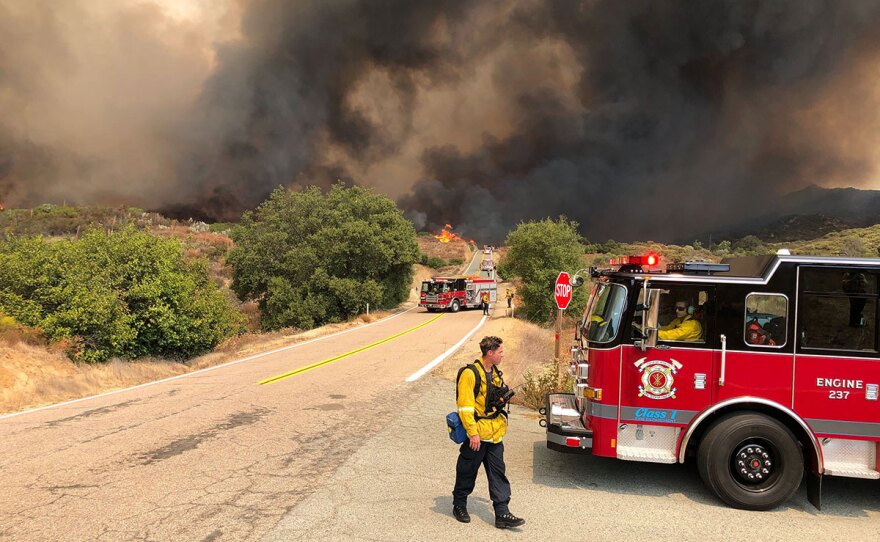California will authorize $536 million for wildfire mitigation and forest management projects before the worst of the fire season strikes later this year, Gov. Gavin Newsom and legislative leaders said Thursday.
That more than doubles $200 million in recent annual spending, advocates said, and wildfire preparedness grants were dropped entirely last year when the state prematurely anticipated a pandemic-driven budget shortfall.
Armed now with an unexpected multi-billion-dollar surplus, lawmakers plan to add the money to this fiscal year's budget before considering even more in the new spending plan that takes effect July 1.
“With California facing another extremely dry year, it is critical that we get a head start on reducing our fire risk," Newsom and his fellow Democrats who lead the Assembly and Senate said in a joint statement.
They're rushing to thin forests, build fuel breaks around vulnerable communities and allow for planned burns before a dry winter turns into a tinder-dry summer. Last year's record-setting wildfire season charred more than 4% of the state while destroying nearly 10,500 buildings and killing 33 people.
Earlier this month, the governor used his emergency powers to authorize nearly $81 million to hire nearly 1,400 additional firefighters. In January, Newsom proposed spending $323 million this spring on forest health and fire prevention projects, with another $1 billion in next year's budget.
Lawmakers said Thursday's agreement expands on the governor's plan with more short- and long-term spending on vegetation management on both public and private land, clearing space around homes and making them less vulnerable to wildfires, fire prevention grants and prevention workforce training. It also includes economic stimulus for the hard-hit forestry economy.
And the leaders said they recognize that fires burn in grasslands and chaparral as well as forests, so the package includes all types of fire-prone terrain and vegetation, with incentives for prevention efforts to protect areas with larger numbers of residents.
The new plan is in Assembly and Senate budget bills to be considered in coming days.
“A $500 million appropriation would be huge and they’ll need to do substantially more than that again for next year," said Paul Mason, vice president of policy and incentives at the Pacific Forest Trust, a nonprofit land trust and think-tank that promotes forest conservation. “It will need to be in the billions.”
Besides devoting some of the budget windfall to fire preparedness, he said lawmakers should find a stable funding source for future years.
"Just as it took us a century to create the fire problems we have right now, it’s going to take us many years to restore resilience to the forest landscape in California,” Mason said.
Lawmakers have already mostly divvied up what Newsom said in January would be a $15 billion one-time surplus, with most of it going to schools and a state economic stimulus package that includes $600 payments to millions of low- to moderate-income Californians.
But the state expects another $26 billion in aid from the federal government with few limits on how it can be spent. Mason said Democratic President Joe Biden's new administration should also invest more in forest projects, given that more than half California's forestland is federally owned.
State officials said they hope to get federal disaster prevention grants to match money that the state will spend on making homes less vulnerable to wildfires.






